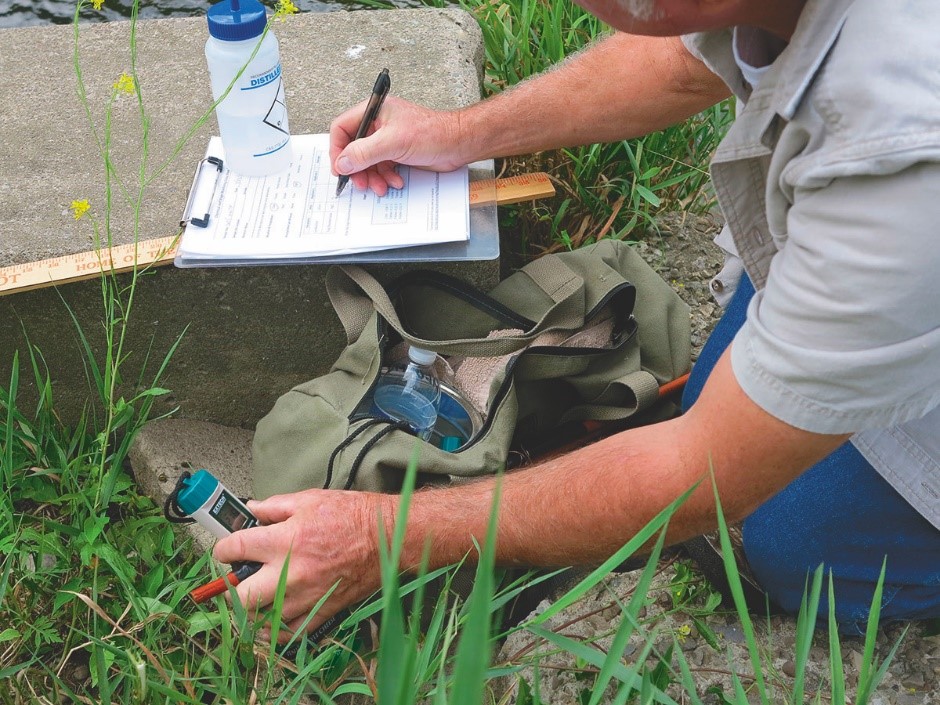Constructed Wetlands


- Design, specification and consultancy
- Natural Flood Management (NFM) and ecosystem services
- Interception, treatment and mitigation of highways and agricultural runoff
- Polishing of sewage effluent and treatment of greywater
- Mitigation for 'nutrient neutrality'
- Phytotechnology for remediation of contaminated soil and groundwater

Our Services in Constructed Wetland Design

Wetlands are the ‘kidneys of the earth’, purifying water through its natural interaction with soils and plants. ‘Constructed’ wetlands are becoming an increasingly popular means of surface water and wastewater disposal, thanks to their low operational cost and the benefit they offer to the environment in terms of biodiversity and amenity. They work well in mitigating the effects of diffuse pollution from agriculture and highways, two of the most significant sources of pollution in our water catchments.
Water Design Engineers has an experienced and excellent understanding of the relationship between soil, water and plants due to our knowledge of irrigation design. Combined with our experience in wastewater engineering, we are of sound pedigree when it comes to constructed wetland design. We are members of the Constructed Wetland Association (CWA) and our designs adhere to industry recognised codes and guidance.
Our wetland designs are robust, intended to last the length of the associated assets, which can be well over 100 years. There is no such thing as maintenance-free, but we design for maintenance to be as safe and practical as possible. To ensure the wetland is performing as per design, we advocate an appropriate level of automation to mitigate the risk of prosecution.
Not knowing whether a wetland is performing and having no failsafe mechanism in place in the event of non-performance can be a deterrent to clients considering wetlands as a viable solution. While incorporating natural processes, constructed wetlands are still a type of treatment plant. When it comes to compliance with environmental permits, the Environment Agency uses the tagline ‘no data, no defence’.
In the UK we are facing a period of significant, impacting changes with the new Environment and Agricultural Acts. Targets for net-zero carbon emissions, biodiversity net gain and ecosystem services present new challenges for both the built environment and agriculture. When appropriately designed, constructed wetlands provide multiple benefits of provision for flood and stormwater storage; treatment and mitigation of pollutants; carbon sequestration; and provision of habitat for wildlife. They are going to play a vital role in meeting the challenges ahead.
Frequently Asked Questions
Constructed wetlands for nutrient mitigation
A Free Water Surface (FWS) wetland can be a viable mitigation solution if you have a combination of the following three elements:
- A source of influent with sufficient nutrient content (concentrations of at least 0.1 mg/l of Total Phosphorus and/or 4 mg/l of Total Nitrogen)
- A source of influent with sufficient flow (ideally available all year)
- An area of land where a wetland can be constructed with the ability to intercept the source of influent and discharge the treated water to a watercourse
This can either be on site (with respect to the new development), or off site as long as it is in the correct catchment (ideally located between the relevant wastewater treatment works and the designated site).
Many people have been led to believe that all wetlands achieve 46% and 37% reductions for Total Phosphorus (TP) and Total Nitrogen (TN), respectively. This is a result of the widely cited Land et al. study which was never intended to be used as a design resource. In reality, wetlands achieve a range of treatment efficiencies depending on the type of wetland and the three key variables of flow, concentration and area. The project specific treatment efficiencies must be calculated using an appropriate wetland design model and unfortunately, a rule of thumb does not apply.
We’ve seen wetlands being sized on the basis of removing TN and TP at a rate of 93 and 1.2 g/m2/year, respectively, and we’ve even seen this built into some of the regional nutrient budget calculators. Again, this is a result of the widely cited Land et al. study and is not a suitable basis of design. Constructed wetlands must be sized according to an appropriate wetland design model. The best approach is to see what size of wetland may be possible in the available area (assuming that a wetland project is viable – see question 1) and then use the design model to estimate how much mitigation is possible. It I important to note that the ‘active area’ of a wetland used in calculations is net of the surrounding berms / accessways and water control structures that are essential for the wetland to function. This should be considered as early as possible on your project – we have had experience of trying to ‘shoe horn’ wetlands into the masterplan at the eleventh hour to try and achieve the mitigation that was thought possible before anyone considered this.
No, it isn’t. If you have a wetland of 0.5 ha and an estimated treatment efficiency of 50%, increasing the size to 1.0 ha will not give you 100% efficiency. Firstly, the relationship between area and treatment efficiency (for a fixed flow and concentration) is logarithmic, not linear. Secondly, constructed wetlands have background concentrations of TN and TP and it is not possible for the final treated water to have 0 mg/l of each.
Wetlands for wastewater treatment
Yes, constructed wetlands can be used to treat the discharge from septic tanks, enabling the treated water to discharge to a ditch or watercourse. This is a sustainable alternative to using a PTP, which will typically consume electrical energy for operation. Septic tanks provide primary treatment of sewage effluent, whereas PTP’s provide both primary and secondary treatment in one unit (secondary treatment is a mandatory requirement). Drainage fields also provide secondary treatment of septic tank effluent, although their effectiveness depends on the permeability of the soil and there are many failed systems in existence, suffering from surface ponding and stagnation. However, paragraph 1.15 of building regs doc H recognises that constructed wetlands also provide secondary treatment. The only other consideration is the area requirement for a constructed wetland, which is typically 3 m2 per population equivalent (PE) for domestic sewage effluent applications, with a minimum area of 15 m2.
No, not if they are designed and maintained correctly. Constructed wetlands for domestic sewage effluent applications are typically of a ‘vertical flow’ (VF) design, whereby the effluent percolates through a porous bed media in a highly aerobic environment. Smells are typically caused by stagnant water at depth, which can become anaerobic and produce hydrogen sulphide which has a rotten egg odour. Horizontal subsurface flow (HSSF) wetlands are more prone to blockage and stagnation over time, but if designed and maintained correctly the risk is low.
No, although just like a PTP, regular maintenance is critical to the ongoing performance. Unlike the maintenance of a PTP, only basic gardening skills are required to maintain constructed wetlands. The main task is the management of the vegetation (reeds). Following commissioning, the bed should be weeded whilst the reeds become established. After 2-3 years, the reeds need to be cut back on a rotational basis each autumn (about 25% of the bed area at one time, changing the area each time so that the cutting follows a 4 yearly cycle). This keeps the reeds rejuvenated and prevents too much plant litter from accumulating on the bed. Exposed pipework should be inspected annually for any signs of blockage / damage.
Possibly, it depends on the application. If the total volume of wastewater is < 5 m3 (a maximum population equivalent, PE of 33), and the wastewater is entirely domestic sewage effluent, then the treated water from the wetland can discharge to surface water (ditch, stream, river, estuary, lake, canal or coastal water) without the need for an Environmental Permit. This is on the basis that the application would comply with the EA’s ‘General binding rules for small sewage discharge to a surface water’. Alternatively, if the total volume of wastewater is < 2 m3 (a maximum PE of 13) and still entirely domestic sewage effluent, then the treated water can discharge to ground (soakaway). This is on the basis that the application would comply with the EA’s ‘General binding rules for small sewage discharge to the ground’. Further information can be found directly from the EA in the following links:
https://www.gov.uk/guidance/general-binding-rules-small-sewage-discharge-to-a-surface-water
https://www.gov.uk/guidance/general-binding-rules-small-sewage-discharge-to-the-ground
Yes, they can. Constructed wetlands have been used to treat a range of industrial effluents, and they are particularly adept at treating wastewater from the food and beverage sector where biochemical oxygen demand (BOD), nitrogen and phosphorus are the key pollutants. They offer a sustainable alternative to exporting of wastewater (by tanker lorry) which is very costly, and they can also be more affordable than discharge to the sewer (as trade effluent). However, viability will depend upon the available space and proximity to a watercourse that the treated effluent can discharge to. Pre-treatment of the wastewater may also be required, e.g. for pH correction or the reduction of high concentrations of heavy metals / oxidising chemicals which could be toxic to the wetland. An Environmental Permit will definitely be required from the EA.




